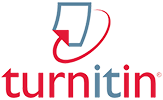Monitoring System for Water Turbidity and Air Muda with Microfiltration in IoT-Based Salt Crystallization Process Using Rule-Based Method
Abstract
Salt is a mineral that humans need. Indonesia has abundant biodiversity, including 20,089 hectares of salt-productive land. However, despite this great potential, Indonesia still has to import salt to meet the national needs that continue to increase yearly. The increase in salt consumption is influenced by population growth. Salt is used in two main categories: consumption and industry. An efficient salt production process will produce higher-quality salt. However, currently, many salt farmers are still using manual methods that are less efficient and time-consuming, and also the water used as raw material has not been filtered. Microfiltration is carried out to reduce water turbidity, which aims to filter microscopic objects so that the water used in the salt crystallization process becomes cleaner. Salt production is carried out by the stage of the microfiltration process automatically based on the level of water turbidity, and the height of the salt evaporation container is regulated by the rule-based method as a control on the servo. By conducting this study, the percentage of ultrasonic sensor error reached 22.21%, and the higher the Analog to Digital Converter value was obtained, the lower the turbidity level (NTU). Using the rule-based method allows the condition of the servo motion to be determined with the value obtained through the sensor.
Keywords
Full Text:
PDFReferences
Nagara, “Pengaruh Lahan, Modal, Tenaga Kerja, Pengalaman Terhadap Produksi Dan Pendapatan Petani Garam Di Kabupaten Buleleng”. E-Jurnal EP Unud, 9 [4] : 873 – 906. 4 April 2020
D. Amami and I. Ihsannudin, “Efisiensi Faktor-Faktor Produksi Garam Rakyat” Media Trend, vol. 11, no. 2, p. 166, Oct. 2016, doi: 10.21107/mediatrend.v11i2.1600. 2016.
Y. Ulfidatul, “Jurnal Studi Manajemen Dan Bisnis Peningkatan Kualitas Produksi Garam Menggunakan Teknologi Geomembran”, Jurnal Studi Manajemen dan Bisnis, JSMB Vol. 6 (2) 2019 hlm. 35-42, 2019.
W.Anisa, ” Rancang Bangun Sistem Monitoring Temperatur Pada Proses Rekristalisasi Di Plant Pemurnian Garam Rakyat Berbasis Iot”. Final Project - Tf 145565, 2017.
H. Yansa, D. Hadi Sandi, D. Nur, and I. Umra, “Sea Water Filter With Circle Method Untuk Meningkatkan Produksi Garam Beryodium Menuju Pencapaian Swasembada Garam Nasional Yang Berkelanjutan”, Jurnal PENA, Volume 2 - Nomor 1- ISSN 2355-3766 – 227, 2015.
Permenkes, Nomor 492/MENKES/PER?/IV/2010 tentang persyaratan kualitas air. Kementrian Kesehatan, Jakarta. 2010
J. Ambarita, R. P. Ardianto, A. Surya Wibowo, K. Kunci, and N. Esp, “Rancang Bangun Prototipe Smarthome Berbasis Internet Of Things (Iot) Menggunakan Aplikasi Blynk Dengan Modul Esp 8266 Design Smarthome Prototype Based On Iot Using Blynk Application With The Esp Module 8266.”
C Sharma, “Communication Protocol Stack for Constrained IoT Systems”, 978-1-5090-6785-5/18/$31.00 © 2018 by IEEE, 2018.
A. H. Sangaji, Y. Pamungkas, S. M. S. Nugroho, and A. D. Wibawa, “Rule-based Disease Classification using Text Mining on Symptoms Extraction from Electronic Medical Records in Indonesian,” Kinetik: Game Technology, Information System, Computer Network, Computing, Electronics, and Control, doi: 10.22219/kinetik.v7i1.1377, Feb. 2022.
A. Celik, I. Romdhane, G. Kaddoum, and A. M. Eltawil, “A Top-Down Survey on Optical Wireless Communications for the Internet of Things,” IEEE Communications Surveys and Tutorials, vol. 25, no. 1, pp. 1–45, 2023, doi: 10.1109/COMST.2022.3220504, 2023.
Udin, H. Hamrul, and Muh. F. Mansyur, “Prototype Sistem Monitoring Kekeruhan Sumber Mata Air Berbasis Internet of Things,” Journal of 24 Applied Computer Science and Technology, vol. 2, no. 2, pp. 66–72, Dec. 2021, doi: 10.52158/jacost.v2i2.219, 2021.
H. Nadzif, T. Andrasto, and D. S. Aprilian, “Sistem Monitoring Kelembaban Tanah dan Kendali Pompa Air Menggunakan Arduino dan Internet.”, Jurnal Teknik Elektro Vol. 11 No. 1 Januari - Juni 2019.
M Sheth, P Rupani, “Smart Gardening Automation using IoT With BLYNK App”, Proceedings of the International Conference on Trends in Electronics and Informatics (ICOEI 2019) : 23-25, April 2019.
N. Fadli Alamsyah Nasir, M. Ahyar, T. Multimedia dan Jaringan, T. Elektro, and P. Negeri Ujung Pandang, “Rancang Bangun Door Lock System Menggunakan Fingerprint Mobile”. JIP (Jurnal Informatika Polinema) ISSN: 2614-6371 E-ISSN: 2407-070X, Volume 10, Edisi 1, November 2023.
A.N Fachdillah, A. Prasetyo, I.P Astuti, “Perancangan Sistem Monitoring Dan Otomasi Pada Hidroponik Menggunakan Algoritma Rule Base Berbasis Iot”, TECNOSCIENZA Vol.7 No.1 Oktober 2022.
Fajri Rachmansyah, Satrio Budi Utomo, Sumardi,”Perancangan Dan Penerapan Alat Ukur Kekeruhan Air Menggunakan Metode Nefelometrik Pada Instalasi Pengolahan Air Dengan Multi Media Card (Mmc) Sebagai Media Penyimpanan (Studi Kasus Di Pdam Jember)”, Berkala Sainstek 2014, II (1): 17-21, 2014.
A Kurniawan, F Assafri, M. A Munandar, A Aziz J, Asep A P & Guntur,” Analisis Kualitas Garam Hasil Produksi Prisma Rumah Kaca Di Desa Sedayu Lawas, Kabupaten Lamongan, Jawa Timur”, Jurnal Kelautan Nasional, Vol. 14, No 2, Agustus 2019, Hal. 95-102, DOI: http://dx.doi.org/10.15578/jkn.v14i2.7073, 2019.
N Syafitri, M Alfarisi.” Analisis Akurasi Dan Presisi Sensor Ultrasonik Hc-Sr04 Pada Robot KRPAI”, Prosiding Diseminasi FTI, 2022.
B Setiyono, A Sofwan, A. A Furqana,” Perancangan Media Komunikasi Antar Perangkat Pada Sistem Rumah Pintar Jaringan Lokal Menggunakan Modul Esp 01”, Transmisi : Jurnal Ilmiah Teknik Elektro, 24, (2), APRIL 2022 p-ISSN 1411-0814 e-ISSN 2407-6422, April 2022.
A Supratman, B. I Nugroho, Syefudin, R. D Kurniawan,” Penerapan Metode Rule Based System Untuk Menentukan Jenis Tanaman Pertanian Berdasarkan Ketinggian Dan Curah Hujan”, INNOVATIVE: Journal Of Social Science Research, Volume 4 Nomor 2 Tahun 2024 Page 7879-7890 E-ISSN 2807-4238 and P-ISSN 2807-4246 Website: https://j-innovative.org/index.php/Innovative, 2024
DOI
https://doi.org/10.21107/ijseit.v9i2.29619Metrics
Refbacks
- There are currently no refbacks.
Copyright (c) 2025 Dwi Kuswanto

This work is licensed under a Creative Commons Attribution-ShareAlike 4.0 International License.




















